Introduction: In this article – in honor of February being Black History Month – Gena Philibert-Ortega gives tips for using “Information Wanted” newspaper ads for African American genealogy. Gena is a genealogist and author of the book “From the Family Kitchen.”
Historical newspapers reflect their era. Advertisements existed for services, products, and other aspects of life. The modern-day newspaper personal ad is all but gone. However, earlier generations did have their own version of personal advertisements.
One example that is especially helpful for African American genealogy are the advertisements placed by enslavers and others looking to recover runaway slaves. These runaway slave ads provided a physical description of the enslaved person, and were penned by the slave owner or the person who found a runaway slave, such as a local sheriff.
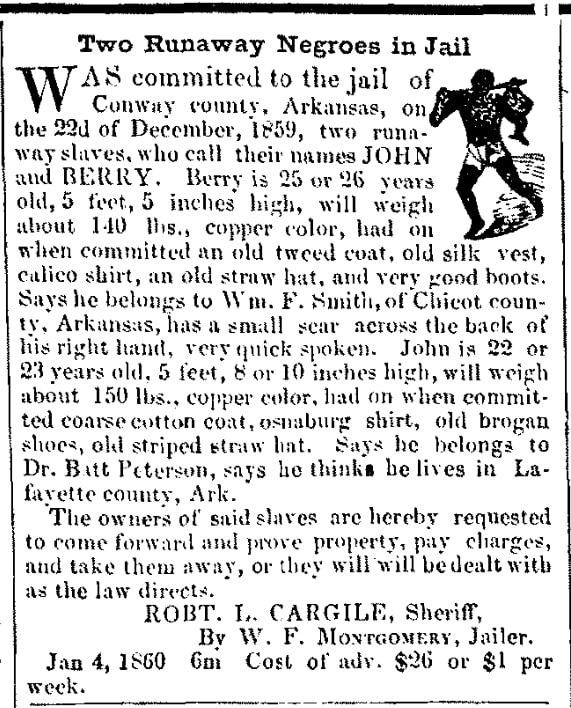
After the Civil War, another type of newspaper advertisement appeared – but this one sought to reunite families that had been torn apart by slavery. This time the advertisements were penned by formerly enslaved people themselves. These ads asked for the whereabouts of their loved ones, and provide a variety of genealogically relevant information including name, age, residences, and family names. Found in Southern newspapers, these advertisements often start with the heading “Information Wanted.” (1)
These newspaper advertisements are essential to the research of family historians. Stephanie E. Jones-Rogers writes in her book They Were Her Property: White Women as Slave Owners in the American South: “These ads were filled with yearning and despair… formerly enslaved people traced their lineages through their losses and separations…” (2) These advertisements provide a look at the formerly enslaved in the years after the Civil War.
Examples of “Information Wanted” Ads
These newspaper ads can be found in various 19th century Southern newspapers I found in GenealogyBank’s Historical Newspaper Archives. Examples from the Colored Tennessean show advertisements from the formerly enslaved trying to find a son, parents, siblings, aunts and uncles. The ads provide the name of the person or persons, where they were last seen, and with whom. This is valuable information for compiling a genealogy.
Notice the details provided in this advertisement for information about Moses Lumly. It provides information about where he was raised, the names of his two previous owners, and that he was living in Rome, Georgia, when Sherman’s army arrived in the spring of 1864.
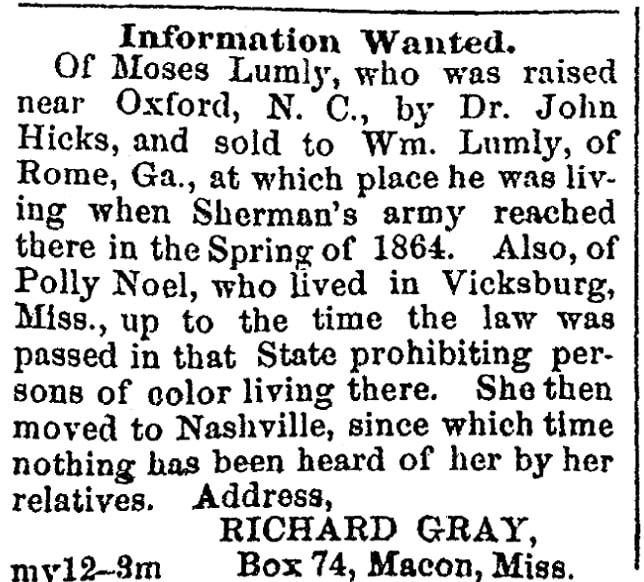
In this ad, John Milton is looking for several members of his family.
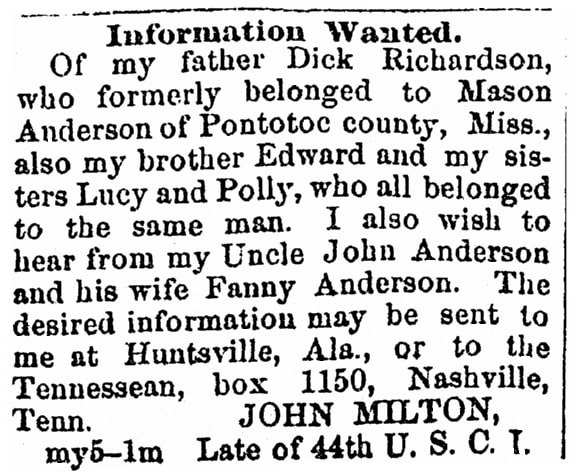
One “Information Wanted” ad I found in the Tri-Weekly Standard, for Greenwood Cooke, indicates he left his home in Wake County, North Carolina, after the arrival of Johnston’s army. His mom, presumably Eliza Cooke, wanted to hear from him.
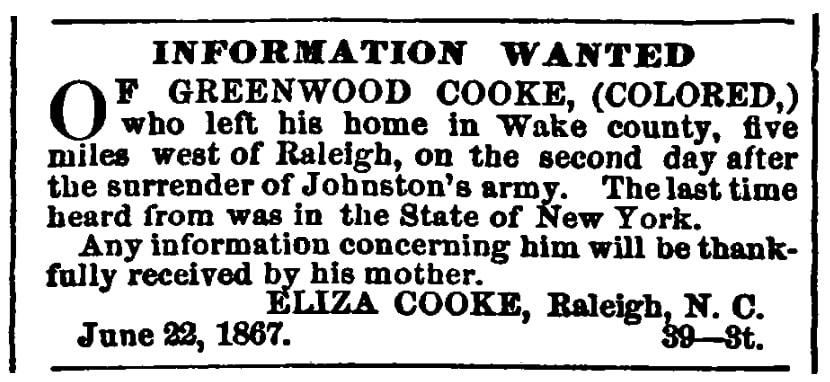
By doing additional research, I discovered that a reunion may have eventually occurred between Eliza and her son Greenwood – perhaps brought about by the newspaper ad she placed.
Using the GenealogyBank census collection, I looked for Greenwood Cooke in the 1870 census, three years after this advertisement appeared. There is a 19-year-old named Greenwood Cook living with a 30-year-old named Eliza in Wake County, North Carolina.
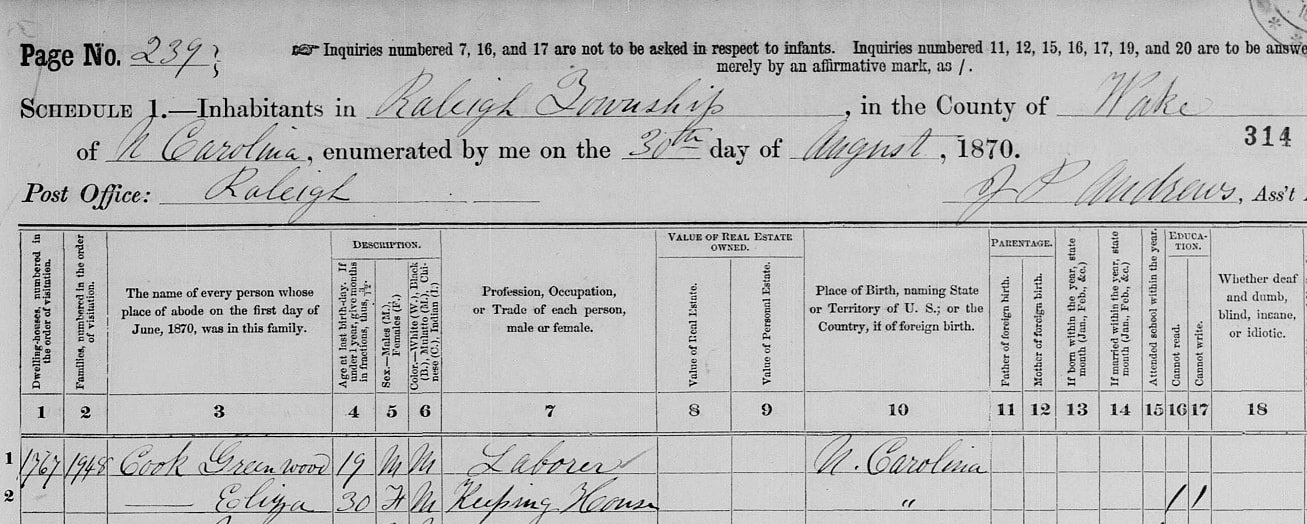
Because there are no relationships listed in this census, it’s difficult to know if this is the Eliza who placed the newspaper ad, or if she is indeed his mother. She would have been a very young mother – but it’s important to remember that they were both born under slavery, and they are listed in the census as Mulatto. It’s also possible that while the advertisement refers to his mother, the Eliza listed in the ad is a sister. More research would need to be done to verify that this is indeed the same family.
Found
So, the question you might be asking is: Did these “Information Wanted” newspaper advertisements result in family members being found? According to the website Last Seen, the answer is yes. How many people were reunited is unknown, but advertisements and subsequent articles included updates of family members found. You can find some of these successes on the Last Seen website. The site also includes a map showing the location of the person searching for a loved one. This is a great way to get a geographical look at these advertisements.
Researching African American Ancestors? Check Old Newspapers!
It’s easy to assume that some people are just not found in the newspaper, such as slaves or ex-slaves. But “Information Wanted” advertisements show that it is possible to find some formerly enslaved people in newspapers after the Civil War years. These advertisements provide an important look into history that needs to be further studied.
_________________
(1) It’s important to note that in some cases, up to and including the year 1865, enslavers also used the heading “Information Wanted” when asking for information about escaped slaves. In addition, the phrase was also used for advertisements for missing items and people of all races.
(2) Jones-Rogers, Stephanie E. They Were Her Property: White Women as Slave Owners in the American South. New Haven: Yale University Press, 2020, p. 200.
